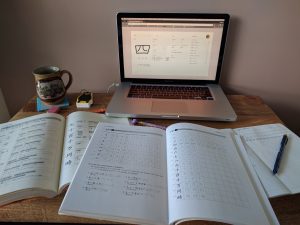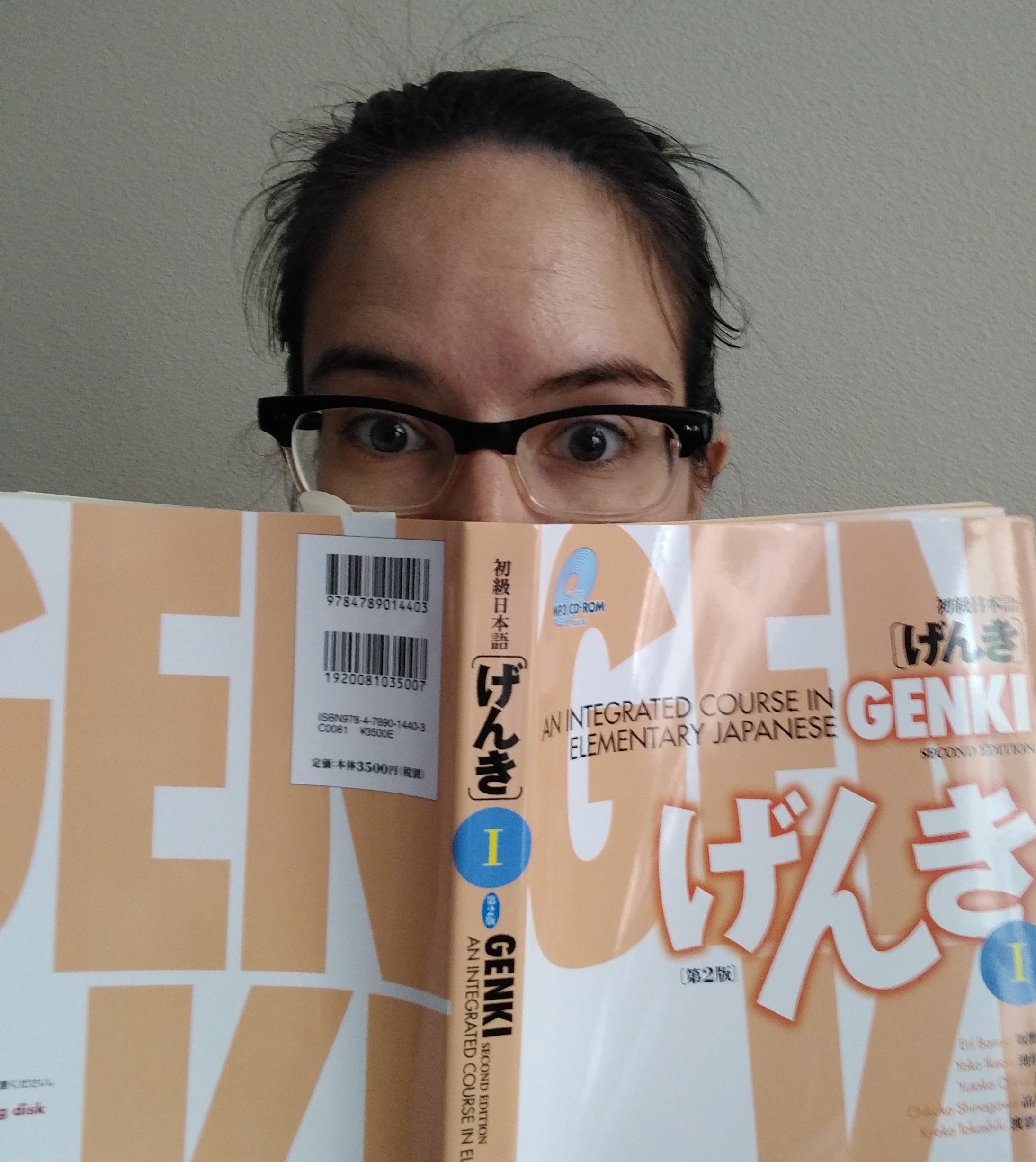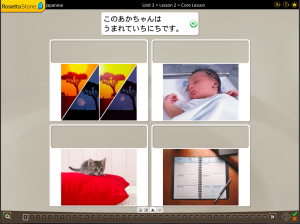I’ve been attempting to learn Japanese in some form ever since I received my first fansubbed VHS tape in high school. I didn’t start taking this goal seriously until 2013, after returning from my first visit to Japan.
You would think that with four years of studying under my belt I’d be well on my way to fluency. In truth, I can barely hold a conversation. Finding the right combination of learning tools has been hard, but as of January this year, I’ve finally began to make solid and consistent progress in my learning goals.
For any other aspiring polyglots out there, allow me to walk you through my learning journey. Perhaps you can learn from my folly, and save some of your own time.
Rosetta Stone Isn’t Necessarily Your Friend
There are many who rave about Rosetta Stone, but personally, I found it difficult to learn on the platform.
Rosetta Stone boasts that they teach you a language through “interactive immersion.” No lectures, just applied practice. From their website:
Without your native language for help, you’ll learn actively – which makes you more successful.
Here’s the struggle: right or wrong, I base learning a new language on English grammatical rules. It’s hard to forget decades of grammatical styling, and I’m instantly curious about Japanese grammatical rules.
With Rosetta Stone, you’re shown a picture and expected to piece together newly learned vocabulary to form a sentence. This is easy at first when the sentences are simple, but as you start putting together more complex sentences, things start getting much more confusing.
Take the image below as an example. You’re presented with the sentence: このあかちゃんはうまれていちにちいです. Immediately you latch onto the word あかちゃん (baby). There is only one picture of a baby, so you know that is the correct image to select.
What you may not notice is the other words: この (this) or いちにち (one day). Heck, since Japanese also doesn’t use spaces between words, you might not know where the words are. There could be a lot of different meanings for the baby laying in the bassinet, and without context, it’s tricky to understand the conveyed point.
Let’s face it: if it was effective to learn a language just by listening to it in context, I would be fluent thanks to all the anime I watch.
Grounding Learning in Grammar
I started making real progress when I bought Genki I: An Integrated Course in Elementary Japanese. In reading through a couple lessons and practicing sentences, I finally understood what Rosetta Stone was trying to teach me over the course of three units and 12 lessons.
As a result, I now see Rosetta Stone as a nice supplement for speaking practice after I’ve understood basic Japanese sentence structure. (So it’s not a total waste of my many $$$$.)
Don’t Fear Children’s Books
While in Japan last year, I picked up two writing practice books for ages 5-6. They’ve been indispensable as I practice Japan’s three writing systems: Hiragana, Katakana, and Kanji. At first, I attempted to learn these systems through rote memorization. I would write the Hiragana and Katakana alphabets at least once a day, challenging myself to write as many as possible without reference.
I soon learned, however, that it was much easier to learn these characters in the context of words. These books also chunk what you’re learning, so you can practice several combinations as you progressively add more characters.
There’s probably a reason this method is used to teach children the basics. And just because you’re an adult doesn’t mean you can’t also benefit. After all, you’re learning the language for the first time, too.

Practice, Practice, Practice
As with learning most things, repetition is key. Getting into a language learning routine really helps you progress more quickly. And when you make progress, you’re more motivated to continue.
I’ve gone back to my schoolgirl roots and created flashcards for memorizing vocabulary. I carry them with me and review words whenever I have a spare moment. (It also helps that they’re a kawaii Kumamon design.) Though I still struggle with getting over laziness and opening my textbook at home.
One tool that’s helped me overcome that hurdle is italki. Italki is a platform that connects language learners with tutors and native speakers. For extremely reasonable prices, I’ve Skyped with teachers in Japan who truly push my learning forward.
I’ve amazed myself at how much I can say when forced to say it — even with my minimal vocabulary. With a regular cadence of weekly lessons, I’m motivated to stay on top of my studies so that I don’t fall behind or disappoint my sensei.

(Because I’m shameless, if you use this link to sign up, we each get $10 credit! \o/)
Find Motivation
My ultimate goal is to be able to read manga and watch anime without translations. (I’d also love to live in Japan for a time, but that presents its own set of hurdles.) Consistently tying my learning back to this goal helps me move forward. Every time I can recognize a word (or even better, a sentence) in the shows I watch is confirmation that what I’m learning is sticking. It’s incredibly exciting and makes me instantly want to get back to work.
Define Your Own Style
What works for me may not work exactly for you. The important thing is to keep trying new techniques until you find a pattern that works. Hopefully it won’t take you four years to do so. (^^ゞ
よんでくれてありがとうございます!


Be First to Comment